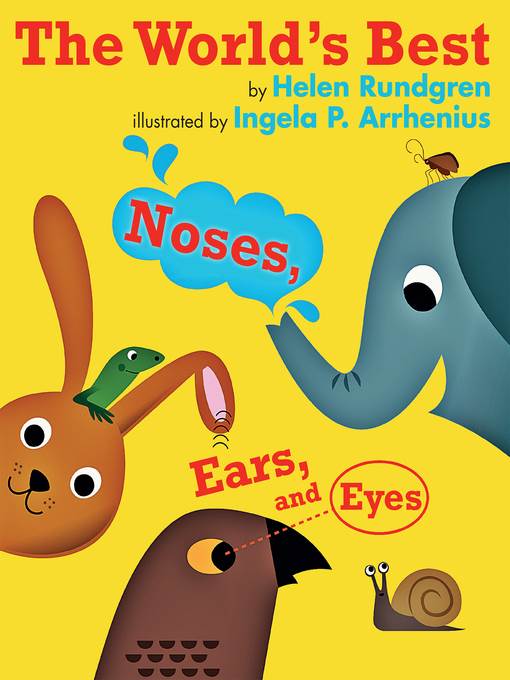
The World's Best Noses, Ears, and Eyes
فرمت کتاب
ebook
تاریخ انتشار
2014
Lexile Score
580
Reading Level
2-3
نویسنده
Ingela P. Arrheniusناشر
Holiday Houseشابک
9780823432455
کتاب های مرتبط
- اطلاعات
- نقد و بررسی
- دیدگاه کاربران
نقد و بررسی

August 15, 2014
Anthropomorphized animals vie in contests determining the world's best nose, ears and eyes. This Swedish import's greatest strength is that it gets kids thinking about the qualities that make something the best: Is the best nose one that can smell the most (dog), the farthest (polar bear), underwater (shark)? Is it one that's pretty (moth) or one that's multiuse (elephant)? And should the best ears stay out of the way, hear the highest or lowest pitches, pick up sounds from different directions or be in unexpected places? The determination of the best eyes looks at similar criteria. In all three cases, human senses are compared to those of the animals, but no winners are crowned-it is left up to readers to judge which is truly the best, though the book's other strength is to nurture in readers a sense of how amazing the animal world truly is. Arrhenius' digital illustrations are flat, cartoonish and brightly colored, illustrating the text but not going beyond it. Her animals lack detail, making the pictures suitable for younger children, though they may not be satisfied with the simple bolded sentences on each page (which don't give much information), while the paragraphs that accompany them may be beyond them. It is easy to predict that readers who pick this up will look for more books about the many adaptations and natural abilities of others members of the animal kingdom. (Informational picture book. 6-10)
COPYRIGHT(2014) Kirkus Reviews, ALL RIGHTS RESERVED.

July 1, 2014
Gr 1-3-Though this picture book seems aimed at the preschool set based on the cartoonlike illustrations (the endpapers are a delightful montage of eyes, ears, and noses), the copious amount of text per page is more appropriate for elementary school students. Rundgren compares the qualities of the eyes, ears, and noses of several animals (with each species explaining why it thinks it possesses the best ones), at times acknowledging that judging which animal has best sense depends upon its particular needs. Unfortunately, the book has a number of flaws: text and illustrations anthropomorphize the animals, and some of the information is incorrect. The book states that a generic male moth can smell a female from a mile away, when, in fact, males of a number of species of moths can detect females from as far away as seven miles. The claim that sharks can detect a few drops of blood in a large body of water is exaggerated. When it comes to eyes, the colossal, or giant, squid has the largest eyes, not, as the book states, the octopus; as for seeing in the dark, owls and tarsiers have better eyesight than cats, and dragonflies have better compound eyes than houseflies. While this offering is attractive, its numerous flaws make it too problematic for general purchase.-Nancy Silverrod, San Francisco Public Library
Copyright 2014 School Library Journal, LLC Used with permission.

























دیدگاه کاربران